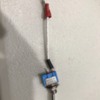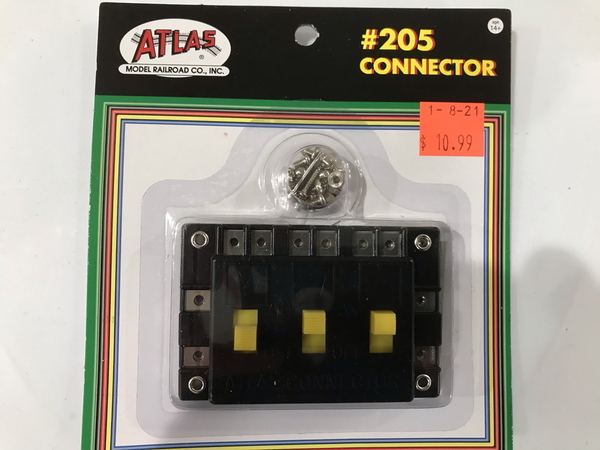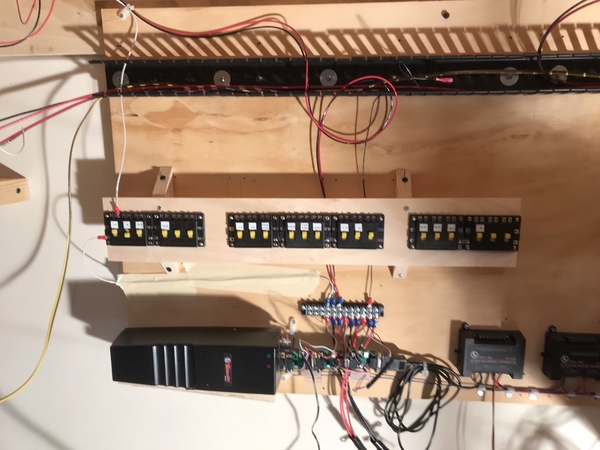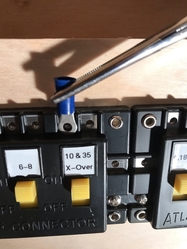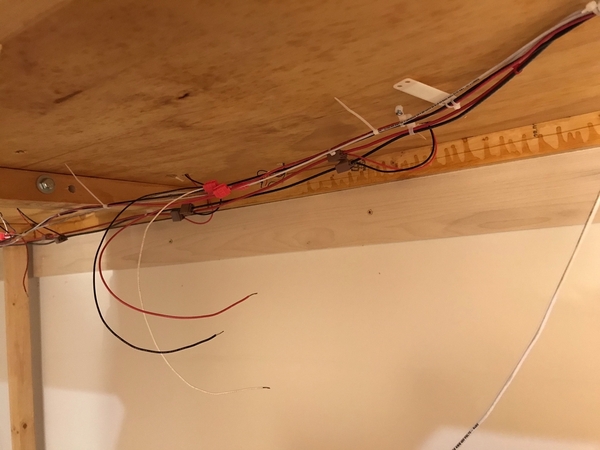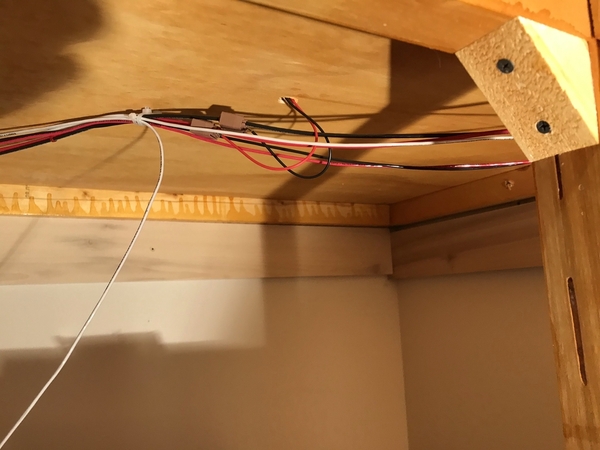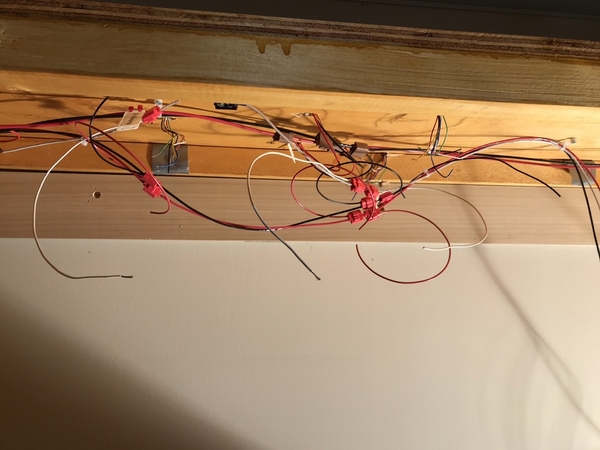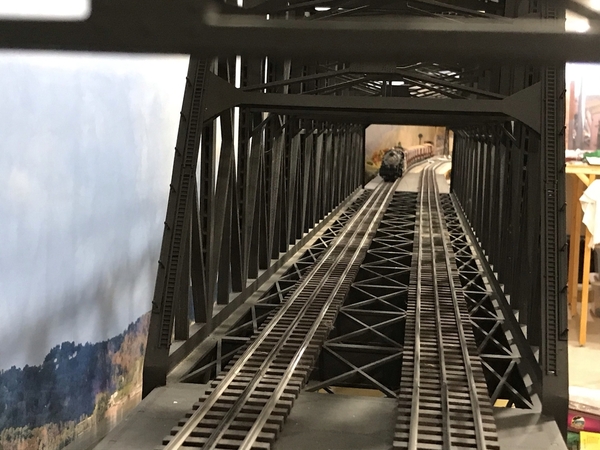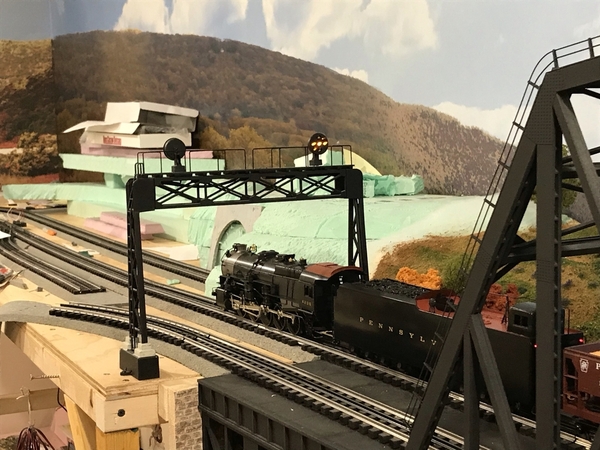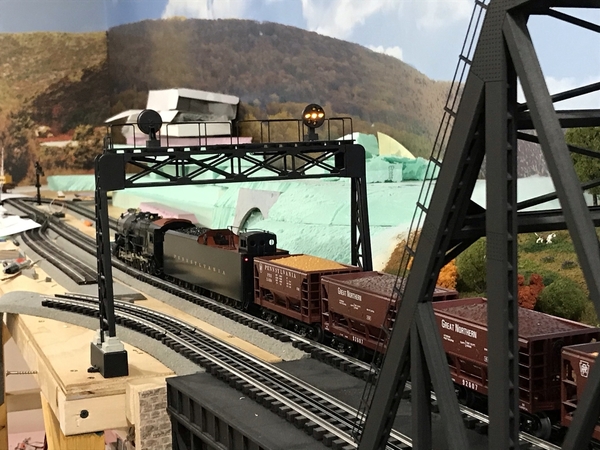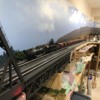Updated 1/14/2021:
Courtesy of Don (Cerritos), I learned of an approach to wiring the "data wire" of a DZ-2001 Data Wire Driver that will aid in the debugging of malfunctioning DZ-2500 switch machines. The DZ-2500C has a much better performance track record than its predecessor, but a single malfunctioning device can affect all devices on that string. The answer is to limit the number of switches. I used terminal blocks with jumpers and SPST switches to construct a panel. This will be installed near my DZ-2001s. I have 3 Switch Buses. Here's my progress so far.
Terminal blocks (w/ Jumpers) for (left to right) the Western, Central, and Eastern switch buses.
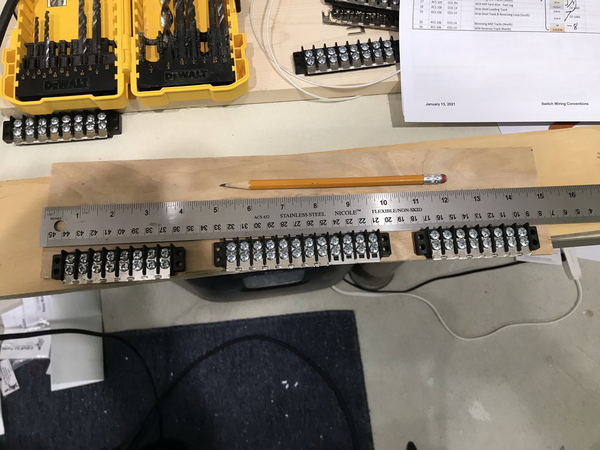
Below is a spreadsheet showing how switches in Switch Bus 2 will be assigned to flip switches.
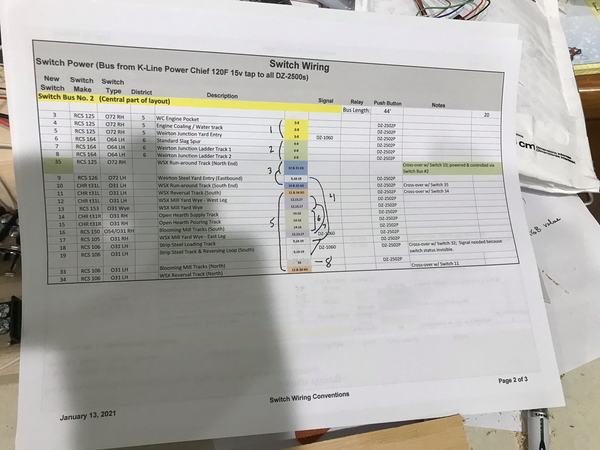
Below is the panel with holes.

Here's a test configuration with a light and switch using 12VAC.
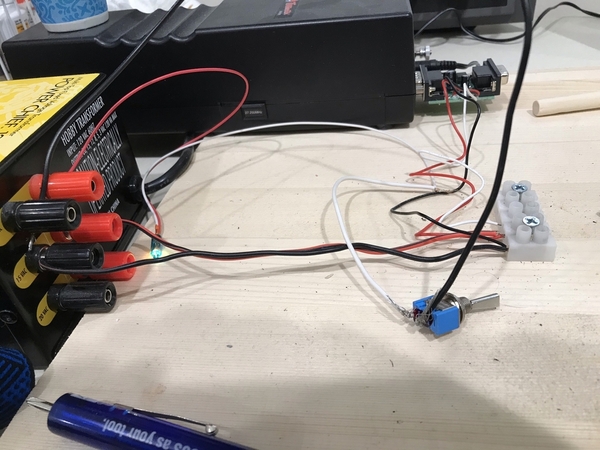
Close-up of the SPST switch and its mounting hole.
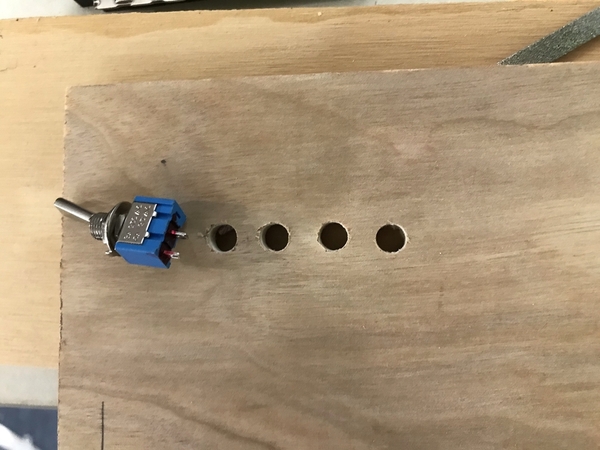
Starting to mount switches.

We have a short wire with a spade on one end for the terminal block. The other is twisted around the SPST lug and shrink-wrapped.

I hope to get this panel and the terminal strips installed and tested either later today or tomorrow.
More when I know it. 
George
![]()



















